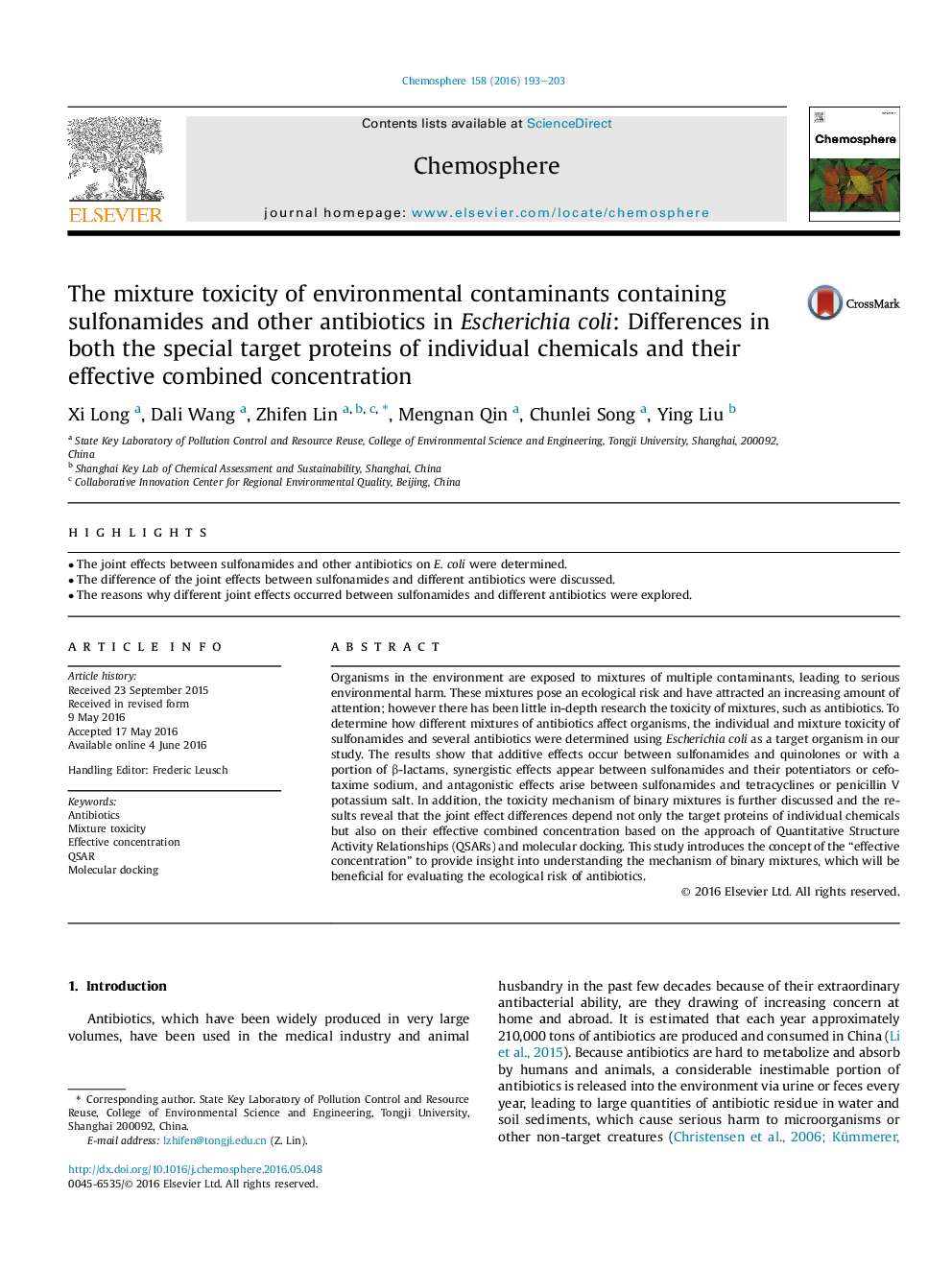| Article ID | Journal | Published Year | Pages | File Type |
|---|---|---|---|---|
| 4407584 | Chemosphere | 2016 | 11 Pages |
•The joint effects between sulfonamides and other antibiotics on E. coli were determined.•The difference of the joint effects between sulfonamides and different antibiotics were discussed.•The reasons why different joint effects occurred between sulfonamides and different antibiotics were explored.
Organisms in the environment are exposed to mixtures of multiple contaminants, leading to serious environmental harm. These mixtures pose an ecological risk and have attracted an increasing amount of attention; however there has been little in-depth research the toxicity of mixtures, such as antibiotics. To determine how different mixtures of antibiotics affect organisms, the individual and mixture toxicity of sulfonamides and several antibiotics were determined using Escherichia coli as a target organism in our study. The results show that additive effects occur between sulfonamides and quinolones or with a portion of β-lactams, synergistic effects appear between sulfonamides and their potentiators or cefotaxime sodium, and antagonistic effects arise between sulfonamides and tetracyclines or penicillin V potassium salt. In addition, the toxicity mechanism of binary mixtures is further discussed and the results reveal that the joint effect differences depend not only the target proteins of individual chemicals but also on their effective combined concentration based on the approach of Quantitative Structure Activity Relationships (QSARs) and molecular docking. This study introduces the concept of the “effective concentration” to provide insight into understanding the mechanism of binary mixtures, which will be beneficial for evaluating the ecological risk of antibiotics.
